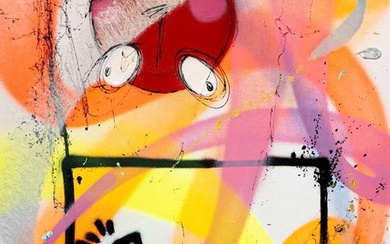Utopia
MORE, Thomas (1478-1535). De optimo rei publicae statu deque nova insula Utopia. With the Epigrammata of More and Erasmus. Basel: Johannes Froben, November and December, 1518. [Bound with:] MORE, Thomas. Epigrammata…ad emendatum exemplar ipsius autoris excusa. Basel: Johannes Froben, December 1520.
Fourth edition of More's humanist classic: Utopia, with the first separate and definitive edition of More's Epigrams. Saint Thomas More's famous allegory encompasses the intellectual forces and trends of his era; its continued relevance is due to More's gift for romance, which has made his timely tract into an intellectual fairy tale for all times. It is also significant in the history of linguistics for More's creation of a new language for his "no-place," complete with its own alphabet which only appears in four of the 16th-century editions of the text. While the first edition illustrates the letterforms in an uneven woodcut, Froben had metal types cut to print More's fantastical alphabet to his exacting typographic design standards. "Froben’s dazzling display of foreign-script printing in the service of a learned joke is almost never sustained as the slippery Utopia makes its way into the vernacular languages and the uneven landscape of printing across Europe. The alphabet’s presence in the early editions underscores the connections between humanist philology, the printing of unfamiliar alphabets, and European expansionism" (Fuchs and Palmer).
This edition is a page-by-page reprint of Froben's revised edition published in March of the same year; this fourth edition was further revised and augmented, presumably overseen by More. Also bound here is the first separate edition of More's Epigrams, with eleven new poems and errors from the 1518 text corrected—as well as two poems omitted for political reasons. Adams M-1757; Fairfax Murray German, 304 (4th edition); Gibson More 4 and 57; Adams M-1753; Gibson 57; VD-16 M-6296. See PMM 47 (1516 edition) and Barbara Fuchs and Philip S. Palmer, "A Lettered Utopia: Printed Alphabets and the Material Republic of Letters," in Renaissance Quarterly 73 (Winter 2020).
Two works in one, quarto (197 x 144mm). Greek and Roman types. First work: woodcut title border by Hans Holbein, repeated on c1, full-page woodcut map of Utopia and half-page woodcut scene by Ambrosius Holbein, woodcut title border to More's epigrams by Urs Graf, woodcut title border to Erasmus's epigrams by Hans Holbein, one of three printer's devices at the end of each part, woodcut historiated initials by Urs Graf and the Holbeins; second work: woodcut title border, small woodcut initials, Froben device on final leaf (some light dampstaining around the edges, a few stains, final leaf a little soiled, a few woodcuts just shaved). 17th-century stamped calf, marbled edges (surface abraded, upper joint starting, hinges tender). Provenance: "sum Anthonii" (contemporary inscription on final leaf), a little bit of marginalia (trimmed) – Lucius Wilmerding (bookplate).
View it on
Sale price
Estimate
Time, Location
Auction House
MORE, Thomas (1478-1535). De optimo rei publicae statu deque nova insula Utopia. With the Epigrammata of More and Erasmus. Basel: Johannes Froben, November and December, 1518. [Bound with:] MORE, Thomas. Epigrammata…ad emendatum exemplar ipsius autoris excusa. Basel: Johannes Froben, December 1520.
Fourth edition of More's humanist classic: Utopia, with the first separate and definitive edition of More's Epigrams. Saint Thomas More's famous allegory encompasses the intellectual forces and trends of his era; its continued relevance is due to More's gift for romance, which has made his timely tract into an intellectual fairy tale for all times. It is also significant in the history of linguistics for More's creation of a new language for his "no-place," complete with its own alphabet which only appears in four of the 16th-century editions of the text. While the first edition illustrates the letterforms in an uneven woodcut, Froben had metal types cut to print More's fantastical alphabet to his exacting typographic design standards. "Froben’s dazzling display of foreign-script printing in the service of a learned joke is almost never sustained as the slippery Utopia makes its way into the vernacular languages and the uneven landscape of printing across Europe. The alphabet’s presence in the early editions underscores the connections between humanist philology, the printing of unfamiliar alphabets, and European expansionism" (Fuchs and Palmer).
This edition is a page-by-page reprint of Froben's revised edition published in March of the same year; this fourth edition was further revised and augmented, presumably overseen by More. Also bound here is the first separate edition of More's Epigrams, with eleven new poems and errors from the 1518 text corrected—as well as two poems omitted for political reasons. Adams M-1757; Fairfax Murray German, 304 (4th edition); Gibson More 4 and 57; Adams M-1753; Gibson 57; VD-16 M-6296. See PMM 47 (1516 edition) and Barbara Fuchs and Philip S. Palmer, "A Lettered Utopia: Printed Alphabets and the Material Republic of Letters," in Renaissance Quarterly 73 (Winter 2020).
Two works in one, quarto (197 x 144mm). Greek and Roman types. First work: woodcut title border by Hans Holbein, repeated on c1, full-page woodcut map of Utopia and half-page woodcut scene by Ambrosius Holbein, woodcut title border to More's epigrams by Urs Graf, woodcut title border to Erasmus's epigrams by Hans Holbein, one of three printer's devices at the end of each part, woodcut historiated initials by Urs Graf and the Holbeins; second work: woodcut title border, small woodcut initials, Froben device on final leaf (some light dampstaining around the edges, a few stains, final leaf a little soiled, a few woodcuts just shaved). 17th-century stamped calf, marbled edges (surface abraded, upper joint starting, hinges tender). Provenance: "sum Anthonii" (contemporary inscription on final leaf), a little bit of marginalia (trimmed) – Lucius Wilmerding (bookplate).







